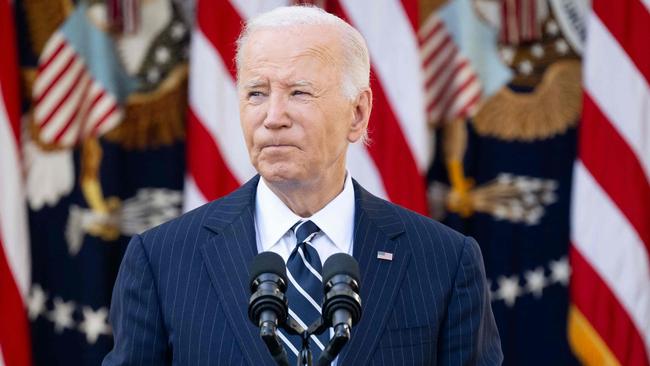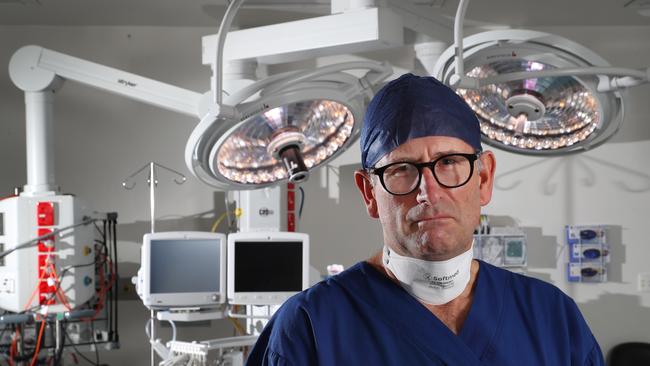Joe Biden’s diagnosis explained
Joe Biden has been diagnosed with an aggressive form of prostate cancer; doctors say draft testing guidelines should reduce chances of a similar situation for Australian men.

With former United States President Joe Biden announcing he has been diagnosed with an aggressive form of prostate cancer that has now spread to his bones, we take a closer look at the illness.
President Biden’s diagnosis comes at a time when Australia is considering revolutionary new prostate cancer testing guidelines that one urologist says if implemented should “avoid the situation that Joe Biden is in”.
Associate Professor Jeremy Grummet is the director of urology at Alfred Health and co-authored the new guidelines. He says Biden’s cancer is treatable but not curable.
“If you can detect prostate cancer early then you can treat it before it spreads and you can treat it while it’s still curable,” he says.
“If he’s got cancer in his bones that’s not curable disease. He’s going to get hormone therapy which is a treatment that slows the disease down but it never cures it.”

While hormone therapy is incredibly effective at slowing the progress of the disease, it comes with difficult side effects.
“The way hormone therapy works is that it knocks out a guy’s testosterone. Some people describe it as a chemical type of castration, and that’s a very commonly used phrase, and it’s very accurate because it basically removes a man’s libido, removes his erectile function, removes his sense of masculinity.
“It also causes hot flushes, weight gain, loss of muscle mass, loss of bone mass. So, it’s a pretty heavy hitting type of treatment. It’s very effective but there’s usually a lot of very challenging side effects for patients who are on it.”
What is the prostate gland and how common is prostate cancer?
The prostate is part of the reproductive system in men. It makes fluid for semen. It’s located below the bladder and it wraps around the urethra, the tube that carries urine and semen out through the penis.
Prostate cancer is the most commonly diagnosed cancer in Australia, with 26,000 men diagnosed each year. While treatments have improved over recent years, the disease still kills around 4000 men a year.
What are PSA and Gleason scores?
Multiple tests are used to detect the disease with the most common method being a PSA, or prostate-specific antigen, test. PSA is a protein produced by the prostate gland and it can be monitored via a blood test. A high reading does not automatically mean a person has prostate cancer but it can be an indicator of the disease and a urologist will then investigate possible causes.
A “normal range” PSA varies depends on age, but is typically around zero and three.
“If it’s above three that’s above normal, especially for the age group between 50 and 70, that’s sort of the main age group when we do PSA testing,” Prof Grummet says.
“Obviously Joe Biden is significantly older than that, and we don’t know at this stage whether he’s been getting PSA testing, I’d be surprised if he hadn’t though, as a former US president. So, that’s why it’s a bit of a surprise that he’s got metastatic disease.”
In the announcement, Biden is described as having a Gleason score of nine. It is a system Australia is currently trying to move away from due to its confusion, according to Prof Grummet.
“It basically runs from six to 10, which is itself a bit weird,” he says.
“You can’t get a Gleason score below six, and you can’t get one higher than 10, so he’s got nine and but we actually group nine and 10 together as being the highest grade of cancer.
“In the modern system that we’re trying to move towards it’s actually a five point grading system, one to five, which is much easier for people to understand. Biden’s Gleason of nine would be the equivalent of a grade group five. That is the highest grade of prostate cancer that you can get. It is the most aggressive. The fact that it’s already spread to bone is another indicator of its aggressiveness.”
The push for new testing guidelines
For decades, debate has raged about whether the harms of testing and detection are outweighed by the benefits of treatment. But, as Prof Grummet points out, with early detection survival outcomes are drastically increased. It is why he hopes Australia does accept the new draft national clinical guidelines which are designed to radically overhaul current recommendations doctors use to guide practice.
If adopted, the guidelines would recommend baseline testing to all men aged over 40, as well as clinical assessment for men aged over 70. It follows two years of rigorous analysis by leading medical and scientific experts alongside the Royal Australian College of General Practitioners.
Public consultation about the guidelines close on May 25 and, if adopted, could make Australia the first country in the world to introduce proactive national clinical guidelines for the early detection of prostate cancer.
Treatment options
Prostate can be a slow growing disease. So much so that some cases may be deemed so small, slow to grow, and unlikely to spread that close active monitoring may be opted for. In that instance, intervention will only happen if the cancer starts to show signs of faster than expected growth.
However, when treatment is recommended, there are several options and each path will depend on both the cancer and the patient.
Surgery to remove the prostate is one option that can be effective, though it can cause impotence and incontinence.
Radiotherapy is another option offered to men with early stages of the disease or in cases when surgery is not an option.
As mentioned earlier, hormone therapy is also and works by slowing a man’s production of testosterone. It can be given alongside other therapies, including chemotherapy.
Trials of emerging drugs are also ongoing for a form of nuclear medicine doctors hope may be more precise than other treatments for certain patients.





To join the conversation, please log in. Don't have an account? Register
Join the conversation, you are commenting as Logout